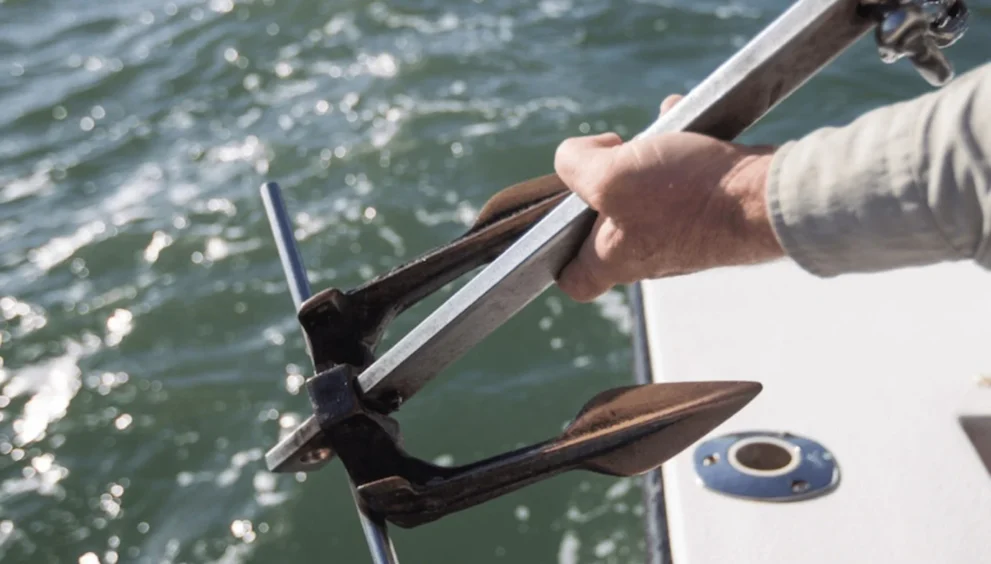Understanding Anchor Terminology in Merchant Shipping
It is one of the most crucial tasks, performed in the course of merchant shipping, since anchoring properly guarantees safety, stability and control on a ship, or moreover awaiting information about it at sea. For those new to the merchant navy or anybody interested in the subject, understanding the phrasing related to anchoring is pivotal.
Anchor Aweigh
The term anchor aweigh alludes to the minute when the anchor is lifted off the seabed. Basically, this implies the anchor is no longer in contact with the ocean floor, and the ship is presently free to move. When a ship is at anchor, getting the anchor aweigh signals that the vessel is prepared to depart.
Anchor Watch
An anchor watch alludes to the duty of crew members who monitor the ship’s position while it is anchored. This guarantees that the vessel remains in place, anticipating accidental drifting or anchor dragging. The anchor watch is ordinarily rotated among the crew to guarantee 24-hour vigilance, particularly during terrible climate or poor visibility.
Anchor Chain
The anchor chain, also known as the anchor cable, connects the ship to the anchor itself. Ordinarily made from steel, this heavy-duty chain is designed to withstand harsh conditions at sea. The length and condition of the chain play a imperative part in the holding power of the anchor. A longer chain offers way better security, whereas a shorter one may compromise the anchor’s capacity to hold the ship steady.
Pay Out
To pay out the anchor chain is to take the chain off of the vessel. Basically the purpose of this is so that the anchor can drop into the water and touch the ocean floor. How much chain is released is determined by the depth of the water and the holding force required by the anchor.
Let Go
Let go alludes to the activity of releasing the anchor from the hawse pipe and allowing it to drop into the water. This marks the start of the anchoring process, where the anchor starts to settle onto the seabed and secure the ship in place.
Scope
In anchoring terminology, scope alludes to the proportion of the anchor chain’s length to the water depth. For instance, a scope of 5:1 implies that for each meter of water depth, five meters of anchor chain are deployed. A appropriate scope guarantees that the anchor holds the ship effectively, preventing it from drifting. In deeper waters, a larger scope is essential because it typically offers more holding power.
Stay and Kinds of Stay
The angle formed by the anchor chain and the seabed is referred to as the “stay.” This angle affects the anchor’s holding control and is determined by the anchor chain’s length in relation to the water depth. There are three fundamental sorts of stays, which can be categorized based on the chain length:
Short Stay: A short stay happens when the anchor chain is relatively short in comparison to the water depth. This results in a steeper angle, which offers less holding control and is typically utilized in shallow waters.
Medium Stay: A medium stay is when the chain length is proportional to the water depth. This gives a moderate angle, permitting the anchor to dig deeper into the seabed and offering better holding power. It’s a flexible and commonly utilized stay for most anchoring situations.
Long stay: long stay refers to the anchor chain being significantly longer than the depth of the water (or in other words the anchor chain is placed at a shallow angle with the seabed ). This is a good choice when the anchor holding force is greatest and a good choice if anchoring in deep water or extreme conditions.
Snub the Cable
When using the brake on the windlass to stop the anchor cable from running out it ‘s called ” snub the cable “. You usually do it to slow the chain off and not run out so fast (especially when the anchor is close to being set on the ocean floor).
Anchor a Cockbill
The term anchor a cockbill refers to a situation where the anchor is hanging vertically from the hawse pipe, with the flukes pointing toward the ship’s side. The anchor is just clear of the hawse pipe, and its weight is upheld by the brake. This position is frequently utilized as a preparatory step before dropping the anchor. While not stowed properly in the hawse pipe at this stage, it is ready for release when necessary.
Conclusion
Anchoring is a critical task for any ship and understanding the phrasing involved can make the process simpler and more effective. Key terms like anchor aweigh, scope, pay out, and the types of stay help crew members execute this operation accurately. By grasping how the anchor chain’s length and angle affect the vessel’s steadiness, you can appreciate how anchoring guarantees a ship’s safety, no matter the conditions.


